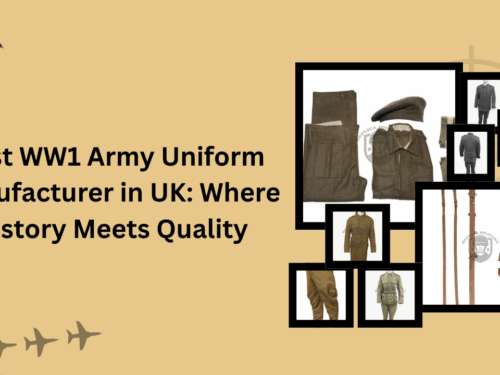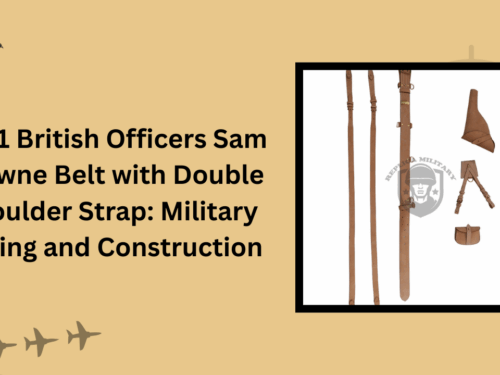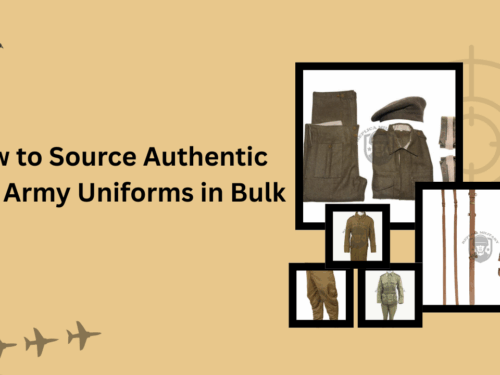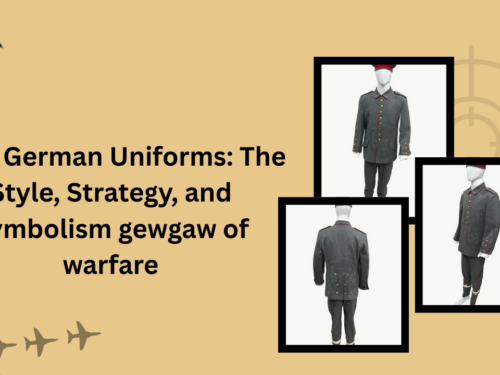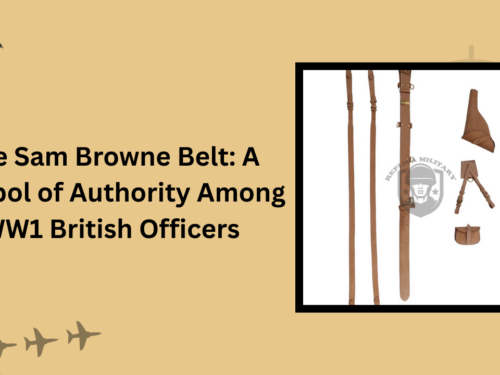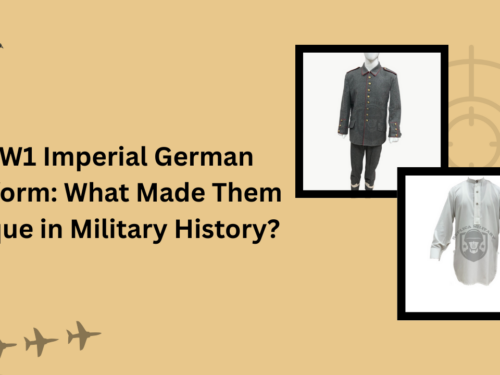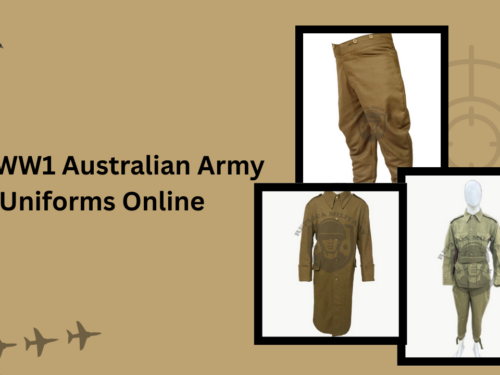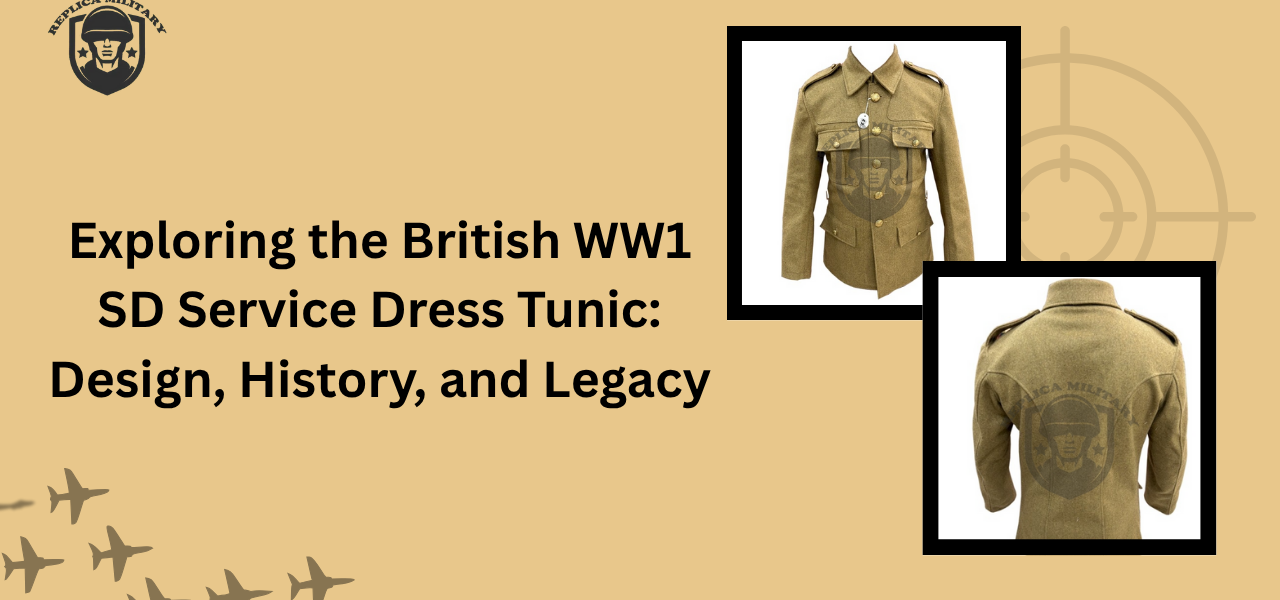
Introduction
The British WW1 SD Service Dress Tunic is one of the most recognizable militaria from the First World War. It epitomizes a multitude of social processes, military conventions, and technological progressions shaped by the war. In this article, we discuss the design and historic importance of the uniform and the impact it had on military history.
The historical development of the British WW1 SD Service Dress Tunic
The Development of a Solemededicotopefor War
British officers and soldiers used to wear showy uniforms pre-World War I, which were ill-suited for fighting in a contemporary battlefield. Trench warfare and modern artillery required some form of camouflage and practicality. Facing these increasing demands of combat, The British WW1 SD Service Dress Tunic was introduced in 1902.
Introduction of the 1902 Pattern
British soldiers were issued the 1902 pattern tunic as they were starting to adopt the khaki color. This signified the disappearance of the red and blue ceremonial uniforms. The new design was meant to be functional, comfortable fore and neutral in color to the battlefield environment. These modern demands were meant to be served by the British WW1 SD Service Dress Tunic.
Critical Features and Options in Design
Materials and Construction
The tunic utilized khaki wool serge which is warmer and more durable than other fabrics. This ensured the tunic would fit the requirements of difficult trench warfare conditions. The British WW1 SD Service Dress was designed to be both breathable and durable.
Color and Camo
The sculpted color is khaki which proved to be a significant advancement. It offered advanced camouflage within the European terrains of the Western Front. Unlike other previously used highly vibrant uniforms, the British WW1 SD Service Dress Tunic was designed so that soldiers could conceal themselves within their surroundings.
Pockets Design
The tunic had four large patch pockets, two on the chest and two at the waist, which were flap pockets with buttons. The form of these pockets allowed space for carrying items such as maps, notebooks, and even rations.
The Standing Collar with Shoulder Straps
The high-standing collar was the first design feature of the tunic. The collar later transformed to a more modern soft fold-down collar. Shoulder straps were made to hold rank insignia and to fasten the equipment like the WW1 British officers Sam Browne belt.
The SD Tunic Clothing and Equipment
Everyday Wear and Combat Utility
The British WW1 SD Service Dress Tunic was not just for ceremonial occasions; it was tailored for battle. Soldiers donned it during their daily activities as well as whilst in the trenches. The garment became an emblem of self-identity and duty.
Officers Customization
Enlisted ranks of soldiers were issued the standard tunic, and officers had the freedom to alter the uniforms to their liking. They all too often altered their British WW1 SD Service Dress so it could be tailored for a finer fitting. Officers also wore the WW1 British Military Officers Uniform which included additional features such as leather arm reinforcements, epaulets, and other additions.
Accessories and Associated Gear
Motifs and insignia about the waist and arms added further distinction worn alongside the uniform. The Sam Browne belt One of the most recognizable accessories which complemented the British WW1 SD Service Dress Tunic was the WW1 British officers’ Sam Browne belt.
Description and Details on Browne Belt
This belt made of brown leather was worn along with a shoulder strap and used to carry a sword or pistol. Its Owen Gaskell role as an officer throughout the cause of the war made this belt a staple.
Headgear and Footwear
With the tunic, soldiers at all levels paired the folded peak service cap. However for working purposes the uniforms were worn by non commissioned members so the regimentally more democratic ankle boots or accurately formal stirrup boots became part of the attire. The woolen greatcoat was put on in cold weather for additional warmth.
Differences Between Ranks and Regiments
Enlisted Men vs. Officers
Along with basic features of the British WW1 SD Service Dress, there were distinctions based on the rank of the officers and enlisted men. Tunic of officers was better made, of higher quality material, and was worn with a WW1 British officers’ Sam Browne belt, along with other officer’s equipment.
Regiment-Specific Variations
Different regiments added custom insignia and badges which led to slight changes on the design of the tunic. These changes signified the specific regiment and duties of the wearer.
Evolution and Influence of the SD Tunic
Later Modifications and Wartime Adaptations
In the course of the war, the tunic sustained minor changes like reinforced seams, added pocket designs, and collars, as well as functional designs of the British WW1 SD Service Dress Tunic, which were made to ease use in the field.
Post-War Legacy
The design of tunics from the British WW1 SD Service Dress remained in use long after the war. This influenced later British military tunics, and the design served as an inspiration for service dress designs until well into the mid-20th century.
The SD Tunic in Modern Historical Reenactments and Collecting
Collectors’ Market
Modern day collectors appreciate the British WW1 SD Service Dress for its artistry and historical value. The craftsmanship is exquisite and complete pieces are hard to come by.
Reenactments and Films
Detail oriented historical reenactors and film productions tend to accurately reproduce the British WW1 SD Service Dress Tunic. The tunics provide character accuracy in period dramas and lessons during the educational reenactments.
Preservation and Restoration
Caring for Original Tunics
In order to maintain a British WW1 SD Service Dress, storage needs to be managed properly. Wool fabric must be kept in cool, dry areas, protected from moths, and not on display. Tactful cleaning strategies must be employed to handle the fabric without causing damage.
Replica Manufacturing
Numerous businesses take delight in designing high quality replicas and reproductions of the British WW1 SD Service Dress Tunic and selling them to collectors, museums, and reenactors. Many of these replicas are based on original blueprints.
Cultural and Symbolic Significance
A Symbol of Sacrifice and Service
The garment of the British WW1 SD Service Dress isn’t its only purpose. This maintains a strong representation of the valor, tenacity, and sacrifice embodied by the men who fought while wearing it. It is suggestive of cruelty of trench warfare, perseverance, and the spirit of service to one’s nation.
Reserving Honor
Traditionally, the British WW1 SD Service Dress Tunic is worn or displayed during commemorative events, such as Remembrance Day and centennial celebrations, to honor those who served. It links the past to newer generatons.
Conclusion
The British WW1 SD Service Dress Tunic epitomizes the essence of military history in the early 20th century. From its distinctive construction and modern portrayal to its significant military culture and historical recognition, it remains an unparalleled testament to Britain’s enduring military heritage. Whether in museums, reenactments, or displayed by collectors, the tunic is a powerful symbol of the Great War’s legacy and the soldiers who bravely served.
Furthermore, the tunic is complemented by the WW1 British Military Officers Uniform and iconic WW1 British officers Sam Browne belt, exemplifying the valorous attire of soldiers during World War I. With the onus to discover and safeguard these relics of history, the legacy of the British WW1 SD Service Dress will never die.

